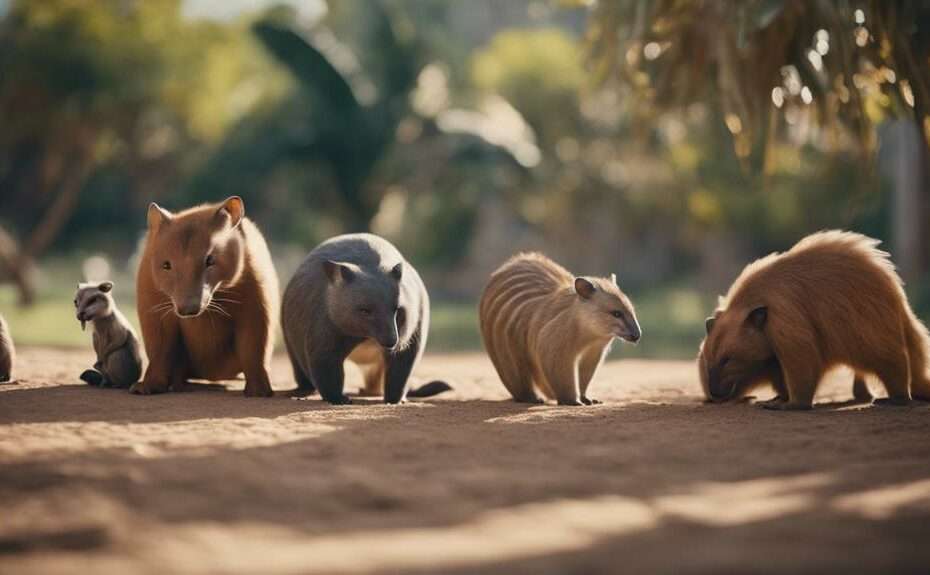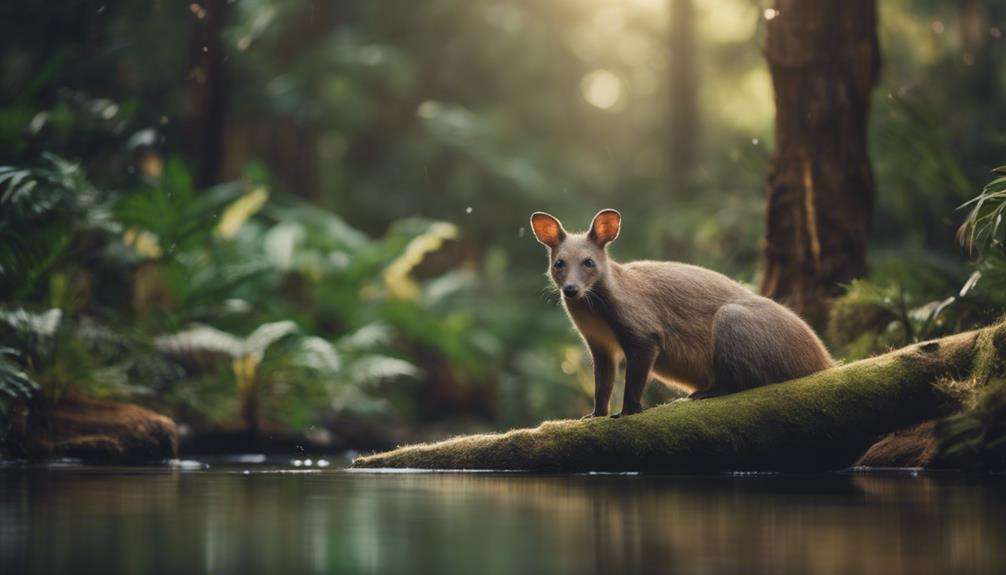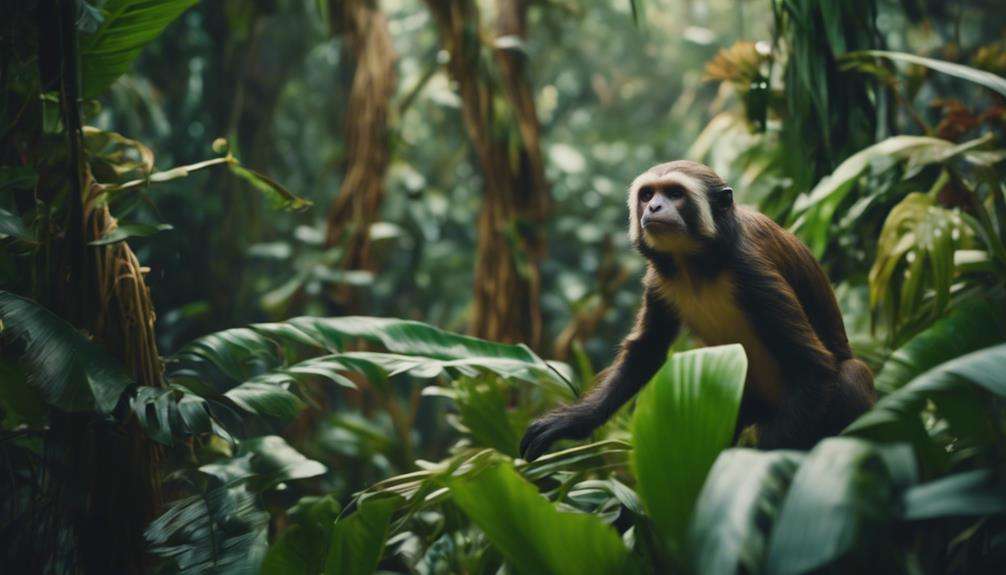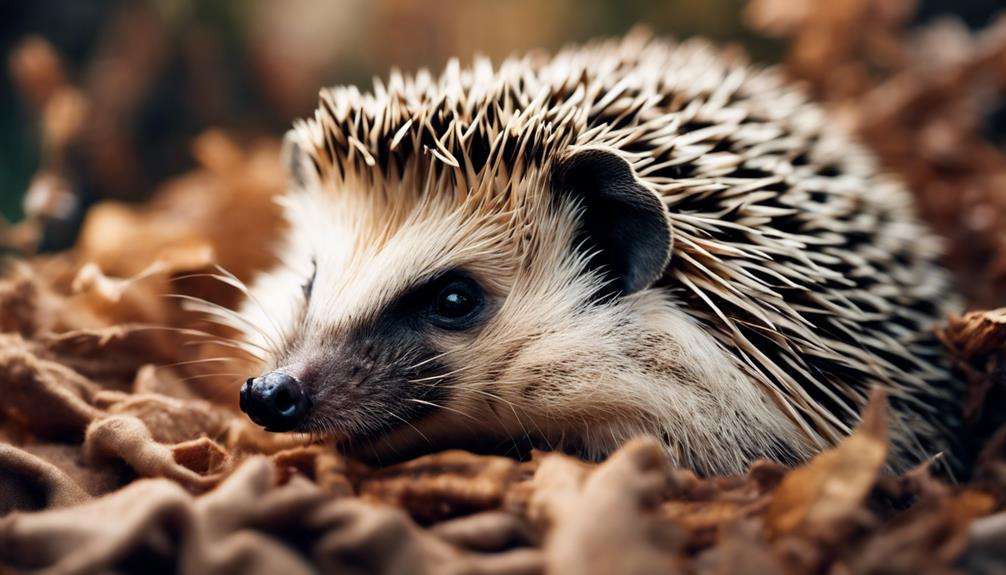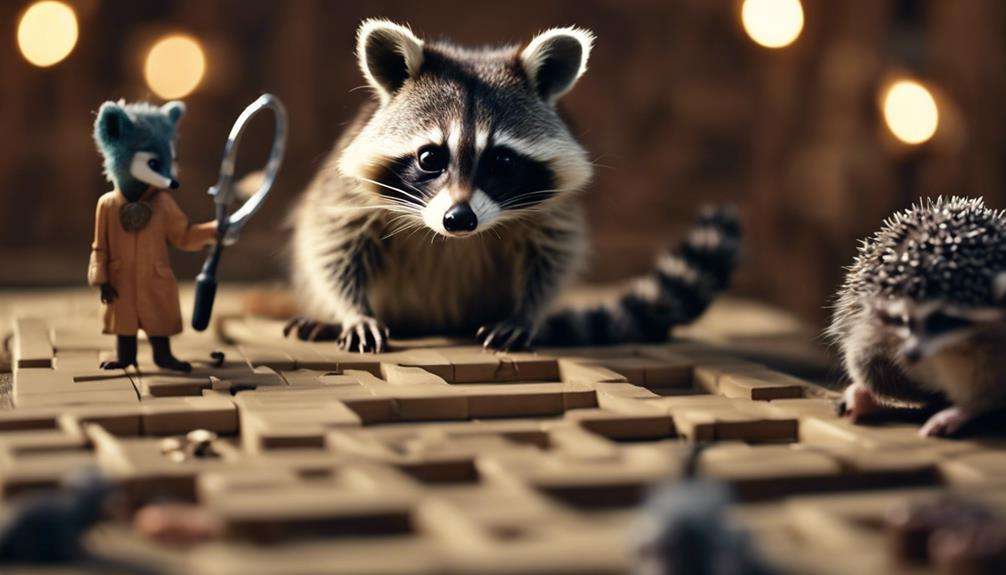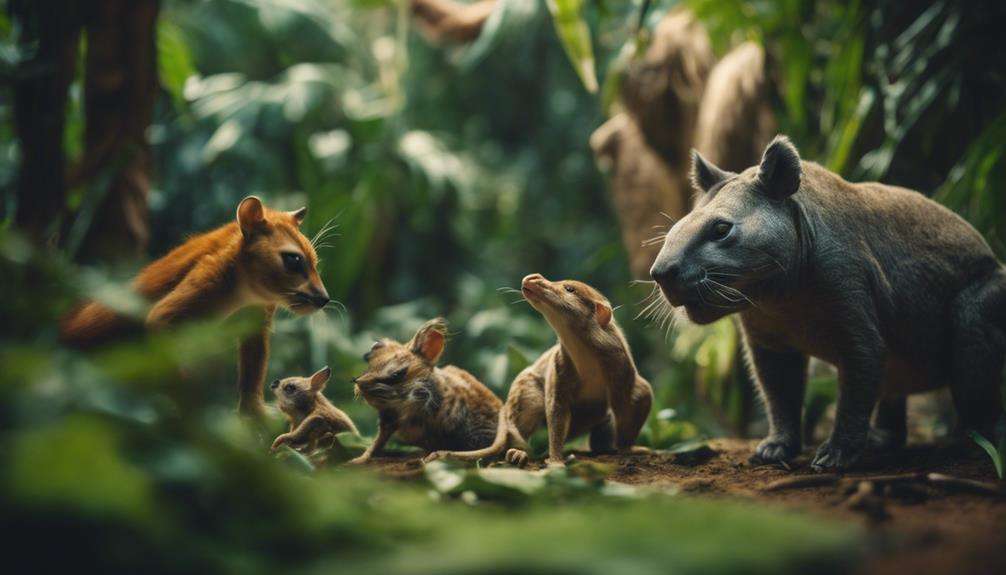Imagine observing a lion pride or a pack of wolves in the wild, their interactions and social dynamics captivating your attention. Now, picture applying those natural behaviors to exotic mammals in captivity, unlocking the secrets to fostering thriving group dynamics and enhancing their well-being.
Understanding the intricacies of these social structures can offer invaluable insights into promoting healthier and more fulfilling lives for these creatures.
Key Takeaways
- Understanding individual personalities and social needs is essential for successful socialization.
- Providing adequate resources, space, and enrichment activities fosters harmonious group interactions.
- Implementing conflict resolution mechanisms and analyzing social dynamics promote group cohesion.
- Dominant individuals establish hierarchies through displays, crucial for maintaining order and reducing conflicts.
Benefits of Socializing Exotic Mammals
Socializing exotic mammals in captivity significantly enhances their overall well-being and cognitive development. Small mammals, such as exotic pets, benefit greatly from human interaction and group dynamics. When exposed to socialization, these animals display reduced stress levels and engage in more natural behaviors. Through interactions with humans and other members of their species, exotic mammals develop important cognitive abilities and emotional resilience.
Human interaction plays a crucial role in the social development of small exotic mammals. It fosters social bonds, which are essential for their overall health and happiness. These bonds also enable the formation of hierarchical structures within the group, promoting communication skills and cooperation. By engaging in group interactions, exotic mammals learn to navigate social complexities, leading to increased adaptability and resilience. Overall, socializing exotic mammals not only enriches their lives but also contributes to the conservation of these species in captivity.
Best Practices for Group Interaction
Establishing a harmonious group dynamic among exotic mammals relies on understanding each individual's personality and social needs to promote positive interactions and strengthen the group bond. Social behavior in exotic animals is intricate, with various species exhibiting unique ways of interacting within a group. Encouraging activities like grooming, playing, and mutual support can enhance cohesion among group members.
Additionally, providing adequate resources, space, and enrichment activities is crucial for maintaining a stimulating social environment. Conflict resolution mechanisms, such as hierarchy establishment and communication cues, play a vital role in maintaining peace within the group. By observing and analyzing the social dynamics of exotic mammals, caregivers and researchers can implement effective strategies to support healthy group interactions.
Understanding the intricacies of group dynamics and social behavior in exotic animals is essential for promoting their well-being and overall quality of life.
Group Dynamics Among Exotic Mammals
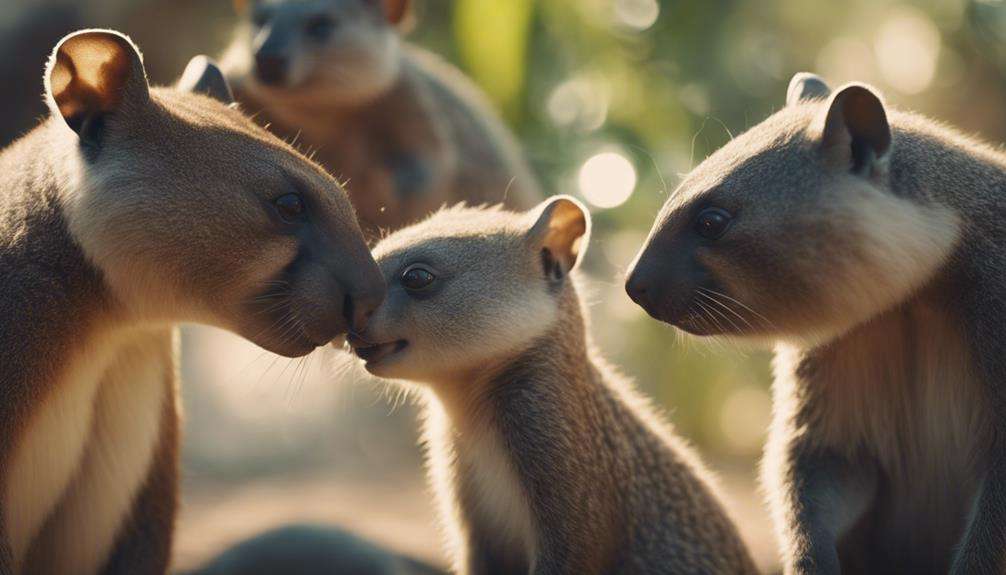
Exotic mammals exhibit a fascinating array of behaviors when interacting in groups. Their communication methods, which include vocalizations, body language, and grooming rituals, play a crucial role in maintaining social cohesion.
Understanding the dynamics of social hierarchies within exotic mammal groups is essential for comprehending their survival strategies and reproductive success.
Behavior in Groups
Within groups of exotic mammals, intricate behaviors such as grooming, playing, and alliance formation are commonly observed. When considering exotic pets, it's essential for pet owners to understand that these animals exhibit social behaviors that can mimic their wild counterparts.
Exotic mammals thrive in groups where they engage in mutual grooming to strengthen social bonds and establish hierarchies. Playing serves as a way for them to practice skills and enhance coordination within the group. Alliance formation among exotic mammals can provide protection and aid in resource acquisition.
It's crucial for pet owners not to underestimate the importance of social interactions for these animals, as neglecting this aspect can lead to behavioral issues and a loss of interest in group dynamics.
Communication Methods
Observing the intricate communication methods employed by exotic mammals reveals the depth of their group dynamics and social interactions. Exotic mammals utilize a variety of communication techniques to convey emotions and intentions within their social groups:
- Infrasound signals: Some species like elephants and dolphins use infrasound for long-distance communication and group coordination.
- Body language cues: Exotic mammals rely on postures, gestures, and facial expressions to express emotions and establish social hierarchies.
- Scent marking behaviors: Many species use scent marking to delineate territories, attract mates, or communicate reproductive status.
- Social grooming: Mutual grooming serves to strengthen bonds, reduce tension, and maintain hygiene within the group.
- Dominance displays: Posturing, vocalizations, and other dominance behaviors help establish hierarchies and resolve conflicts within social structures.
Social Hierarchy Dynamics
Social hierarchy dynamics among exotic mammals reveal intricate patterns of dominance and submission within their social groups. Dominant individuals often exhibit dominance displays to assert their position and gain priority access to crucial resources like food, mates, and resting spots.
In contrast, subordinate members display submission cues, such as avoidance or grooming, to appease dominant group members and maintain peace within the hierarchy. Hierarchical interactions play a vital role in reducing conflicts and establishing order within exotic mammal groups.
Understanding these dynamics is crucial for effectively managing exotic mammals in captivity, ensuring their well-being and promoting harmonious social interactions among group members.
Socializing Techniques for Exotic Pets
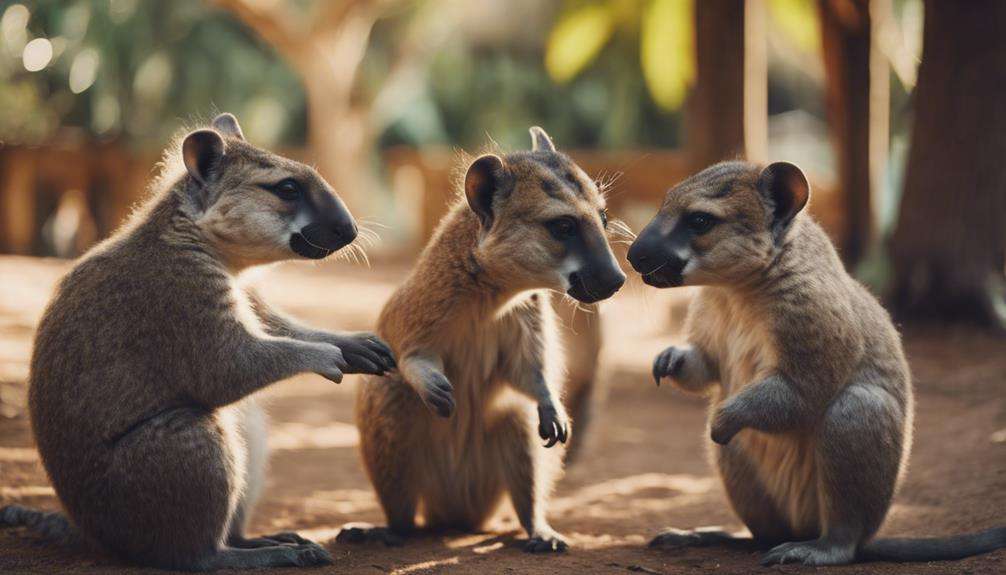
To establish a strong bond with your exotic pet, engaging in interactive play can serve as a foundation for communication cues and mutual understanding.
Observing your pet's responses during play sessions can offer valuable insights into their preferences and comfort levels, aiding in tailoring socialization techniques to suit their needs.
Bonding Through Play
Play serves as a vital tool for fostering bonds and enhancing social connections among exotic pets. When exotic pets engage in playful behaviors like chasing, wrestling, and interactive games, they're actively building trust, enhancing communication, and strengthening bonds with their owners. Playful interactions mimic natural behaviors in the wild, providing essential physical and mental stimulation.
By offering a variety of toys, puzzles, and interactive activities, owners can enrich playtime and socialization for their exotic pets. Supervised play sessions are crucial, as they encourage positive experiences, reduce stress, and further solidify the bond between exotic pets and their caregivers.
- Building trust
- Enhancing communication
- Strengthening bonds
- Mimicking natural behaviors
- Offering a variety of toys
Communication Cues
As exotic mammals engage in various forms of communication, their use of vocalizations, body language, and scent marking plays a crucial role in conveying emotions and intentions within their social interactions.
Understanding subtle cues like ear movements, tail signals, and facial expressions is key to interpreting the complex social signals exchanged among exotic pets. Ear movements, such as perking up or flattening against the head, can indicate alertness, aggression, or submission. Tail signals, like wagging, puffing, or stiffening, often reflect the animal's mood or level of arousal.
Additionally, facial expressions, including widened eyes, bared teeth, or relaxed features, offer insights into an exotic mammal's emotional state and readiness to engage in social interactions.
Factors Influencing Group Cohesion
In understanding the dynamics of group cohesion in exotic mammals, it becomes evident that factors such as social hierarchies, communication skills, and individual roles significantly influence the strength and stability of social bonds within these groups.
- Genetic relatedness, grooming behaviors, and shared resources contribute to the strength of social bonds in exotic mammal groups.
- Conflict resolution strategies, such as submission displays and reconciliation behaviors, play a crucial role in maintaining group cohesion.
- The presence of dominant individuals, alliances, and cooperation in activities like hunting or raising offspring can enhance group dynamics in exotic mammal societies.
- Environmental factors, such as habitat quality, availability of food sources, and predation pressure, also impact the stability and cohesion of exotic mammal groups.
These elements collectively shape the intricate tapestry of relationships within exotic mammal groups, highlighting the importance of various factors in fostering cohesion and ensuring the overall well-being of the social unit.
Successful Socialization Strategies
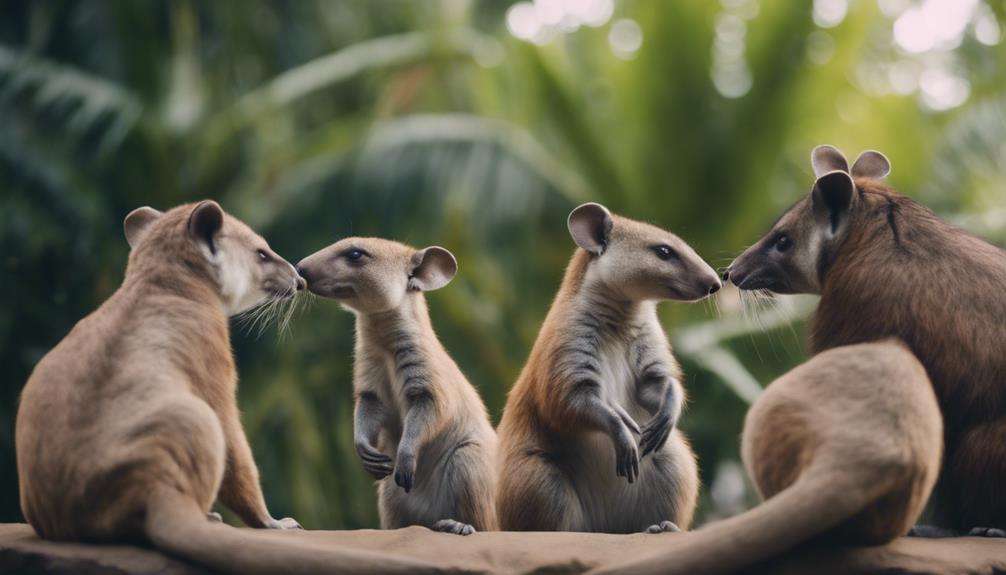
Factors influencing group cohesion in exotic mammals lay the foundation for implementing successful socialization strategies that promote harmonious interactions and communication within the group. Social bonding and trust-building activities such as grooming and play are essential for strengthening relationships among exotic mammals. These interactions not only foster bonds but also enhance communication within the group. Additionally, incorporating behavioral enrichment and providing mental stimulation through various activities can further solidify social bonds and improve overall group dynamics.
Understanding the dynamics of conflict resolution and dominance establishment is crucial in successful socialization strategies. Gradual introductions and supervised interactions help exotic mammals establish social hierarchies, leading to smoother group dynamics. By respecting natural behaviors and social structures, individuals can feel more secure within the group, fostering a sense of belonging and cooperation.
Consistent monitoring of group dynamics allows for early intervention in case of any disruptions, ensuring the well-being and integration of all members. By considering individual personalities and preferences, caretakers can tailor socialization strategies to meet the specific needs of each exotic mammal, ultimately promoting a cohesive and thriving social group.
Frequently Asked Questions
How Can We Help Exotic Pets?
Help exotic pets by considering ethical considerations, welfare concerns. Practice responsible ownership, proper care with legal implications in mind. Seek expert guidance for socializing effectively. Ensure a safe, stimulating environment, regular check-ups for their health and well-being.
How Can Keeping Exotic Pets Be a Negative Influence on Conservation Biology Efforts?
Keeping exotic pets can negatively impact conservation efforts by contributing to habitat destruction due to specialized needs, fueling illegal wildlife trade, and introducing invasive species. Responsible ownership and promoting awareness are crucial in mitigating these risks.
Should You Keep an Exotic Animal as a Pet?
Keeping an exotic animal as a pet requires ethical considerations and ownership responsibility. Legal implications, financial commitment, and behavioral challenges must be considered. Understanding habitat requirements is crucial for proper care and ensuring the animal's well-being.
Why Might Keeping an Exotic Pet Hurt Conservation?
Keeping an exotic pet might hurt conservation through contributing to wildlife trafficking, habitat destruction, and disease transmission. By supporting the exotic pet trade, you inadvertently fuel activities that harm wild populations and ecosystems.
Conclusion
As you observe the delicate web of relationships among exotic mammals, remember that socialization is the heartbeat of their existence.
Like a symphony conductor leading a harmonious orchestra, nurturing these bonds is key to their well-being.
By understanding the intricacies of group dynamics and employing effective socializing techniques, you can help these creatures thrive in their natural social environments.
Embrace the role of a social architect, shaping connections that enrich their lives and preserve their species.
